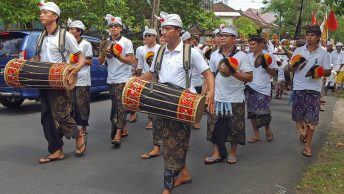The Indonesian archipelago is home to an astonishing diversity of fighting styles. The well-known and learned martial artist Donn Draeger thought there were between two and three hundred, but many believe that one can find that many styles without moving outside the capital Jakarta. Native Malaysians, Indians, Chinese, Arab traders, Dutch colonists, Japanese invaders, and hundreds of other ethnic groups have left their mark on the archipelago, and not infrequently on each other’s bodies. The fighting styles observed in the area reflect this. The fighting techniques of the archipelago are well-known for their practical methods and their effectiveness both with and without the use of weapons.
Material arts found in Indonesia
Kun Tao and Pentjak Silat are the two primary categories that can be used to categorize the various fighting arts that are present in Indonesia.
Kun Tao
Kun Tao is the term for the Chinese fighting styles practiced in Indonesia. The term means “Fist Way”, just like “Kempo” and “Kune Do”. Practitioners of Chinese fighting styles will see many similarities in Kun Tao. Many well-known styles, such as Taiji, Shantung Black Tiger, and Fukien regional boxing, are practiced in Indonesia. The appearance may be somewhat different, but in the basics they are quite similar. Different physical conditions and contact with other martial traditions have led to a deviation from the styles according to how they are trained in China. Due to the unfortunate history of the Malaysians and Chinese in Indonesia, Kun Tao is not practiced as openly or by as many as the varying styles of Pentjak Silat. Kun Tao is mostly studied and practiced by those of Chinese ancestry. One of the most famous teachers of Kun Tao in North America is Sifu Willem de Thouars.
Pentjak Silat
Pentjak Silat literally means, the ceremonial movements or choreography (Pentjak) for combat (Silat). It is a collective term for all the native martial arts in Indonesia. There are regional specialties such as the kicking and ground fighting technique of the Sumatran Harimau or the technique associated with hand gestures in Bali and Java. The Indonesian government has created a separate organization (IPSI), which will work to bring out a martial art out of the practical and brutal martial art of Pentjak Silat. This martial art, Silat Olah Raga has now become a regular part of the Southeast Asian Games. The word Silat is also used in Malaysia and by the Muslim part of the Southern Philippines. Although the words Pentjak and Silat can be used separately, it is an expression that tells something about their dependence to be the supreme martial art that it is. “Pentjak without Silat is meaningless. Silat without Pentjak is worthless”.
More about Kun Tao: https://en.wikipedia.org/wiki/Kuntao
More about Pentjak Silat: https://en.wikipedia.org/wiki/Pencak_silat, https://blackbeltmag.com/pentjaks-silats-9-deadliest-weapons
Photo credit: Dody Guci (Wikipedia Commons)







